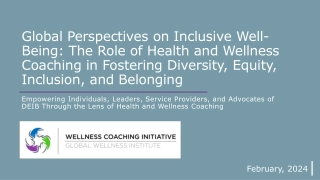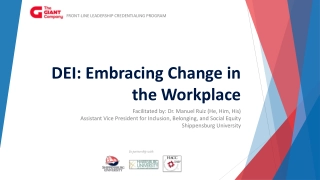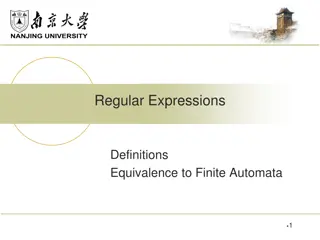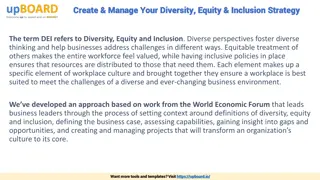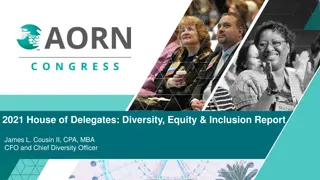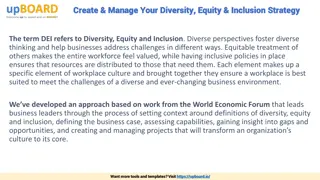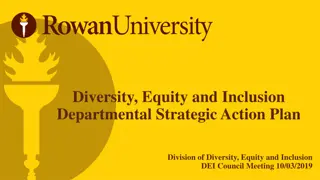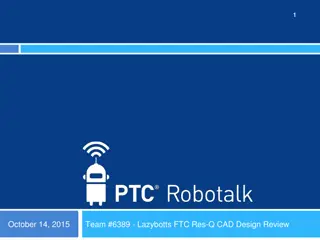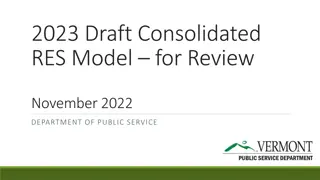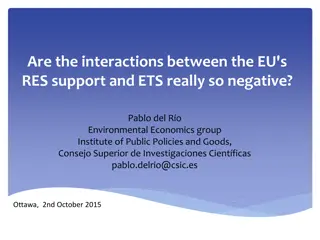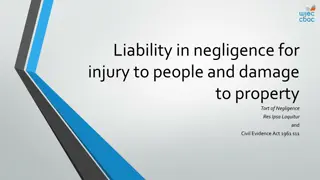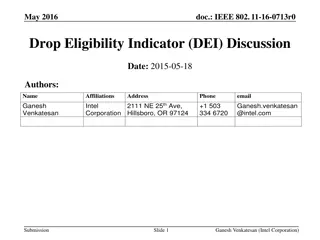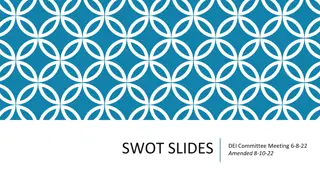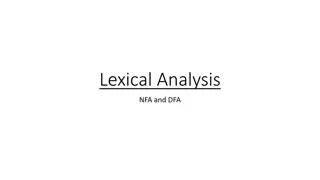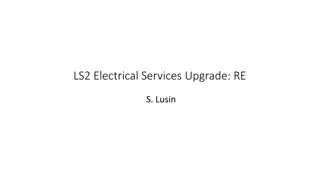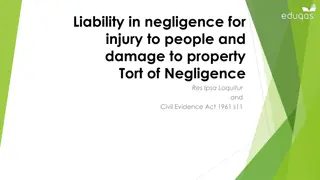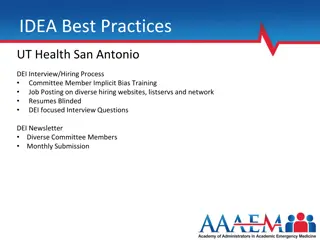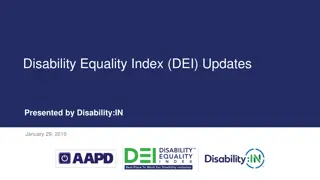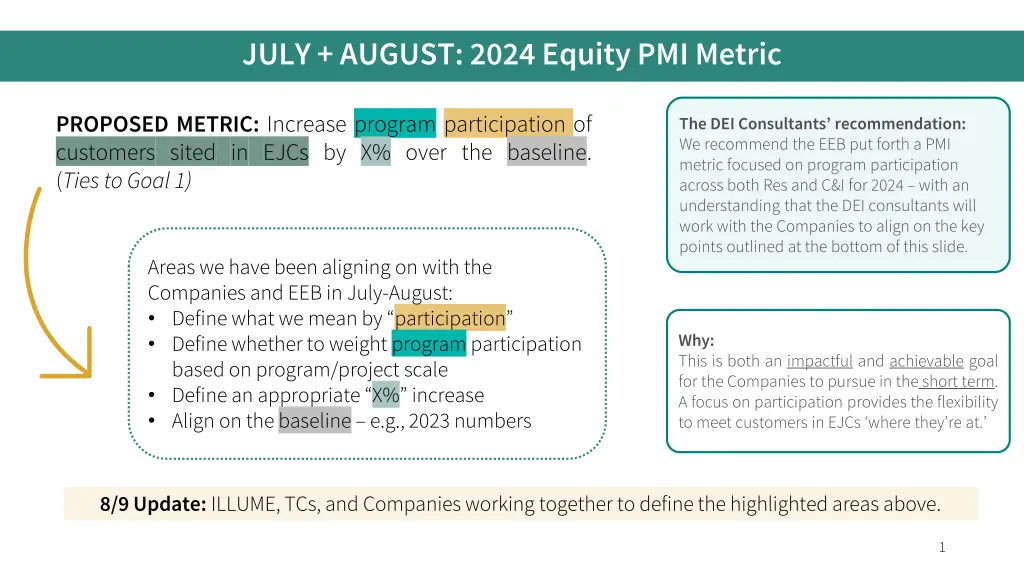
Equity PMI Metrics for Program Participation in Environmental Justice Communities
Explore the proposed Equity PMI metric aiming to increase program participation of customers in Environmental Justice Communities. Learn about the recommended studies, key focus areas, and initiatives outlined for 2024 to address inequities in energy efficiency programs.
Download Presentation

Please find below an Image/Link to download the presentation.
The content on the website is provided AS IS for your information and personal use only. It may not be sold, licensed, or shared on other websites without obtaining consent from the author. If you encounter any issues during the download, it is possible that the publisher has removed the file from their server.
You are allowed to download the files provided on this website for personal or commercial use, subject to the condition that they are used lawfully. All files are the property of their respective owners.
The content on the website is provided AS IS for your information and personal use only. It may not be sold, licensed, or shared on other websites without obtaining consent from the author.
E N D
Presentation Transcript
JULY + AUGUST: 2024 Equity PMI Metric PROPOSED METRIC: Increase program participation of customers sited in EJCs by X% over the baseline. (TiestoGoal1) The DEI Consultants recommendation: We recommend the EEB put forth a PMI metric focused on program participation across both Res and C&I for 2024 with an understanding that the DEI consultants will work with the Companies to align on the key points outlined at the bottom of this slide. Areas we have been aligning on with the Companies and EEB in July-August: Define what we mean by participation Define whether to weight programparticipation based on program/project scale Define an appropriate X% increase Align on the baseline e.g., 2023 numbers Why: This is both an impactful and achievable goal for the Companies to pursue in the short term. A focus on participation provides the flexibility to meet customers in EJCs where they re at. 8/9 Update: ILLUME, TCs, and Companies working together to define the highlighted areas above. 1
JULY + AUGUST: 2024 Equity PMI Metric Programs included for 2024equity PMI Metric: 1. Home Energy Solutions (HES) > > Single Family > > Multifamily 2. Home Energy Solutions-Income Eligible (HES-IE) > > Single Family > > Multifamily 2
AUGUST-SEPTEMBER: Non-Participant Study The DEI Consultants recommendation: We recommend the companies, EEB, and DEEP to conduct a Non- Participant Barriers study, with a focus on customers sited in EJCs and customer groups with historically low participation (renter-landlords, low-to-moderate-income customers, and small and micro-businesses). Why a study? In order to address inequity in energy efficiency, one must first know where those inequities exist and how they are showing up. This study will help the Companies more strategically address barriers to participation. Whoshouldbethetarget subjects?Non-participating or lapsedparticipants. What is the next step? The Companies will release a proposal to DEEP around how to proceed with this studybytheendof Q32023. Whatisthetimeline?TheCompanieswill aim to havethestudycontractedin 2024. 8/9 Update: ILLUME, TCs, and Companies working together to define appropriate scope, budget, and timeline for study, which the Companies will then release to DEEP. 3
SEPTEMBER-DECEMBER: The EEBs Equity Vision Equitableenergyefficiencyprogramswill: Alleviatehighenergyburdensforlow-income andunderservedhouseholdsandcustomers Recognize and remediate past structural inequalities by prioritizing historically underserved communities,individuals, andbusinesses Why: The 2022-24 C&LM Plan defines underserved populations as "renters, landlords, multi-unit dwellings, small and microbusiness in low-income and environmental justice communities, and others. This expanded definition includes any homes/businesses sited in EJCs. Note that our 2023-2024 consulting support and the non-participant study the Companies are likely to pursue in 2024 are likely to help inform whether the current "underserved populations" definition should be expanded or fine-tuned. This is an appropriately encompassing interim definition to use. The DEI Consultants recommendation: We recommend the EEB define underserved as "residential and C&I customers sited in environmental justice communities (EJCs), as well as low-income customers, renters, landlords, multi-unit dwellings, and small and microbusinesses." 8/9 Update: ILLUME will move into Task 3 of our 2023 workplan defining underserved populations in September. Note this work will carry into 2024. 4

